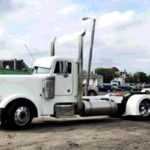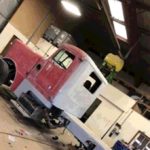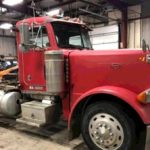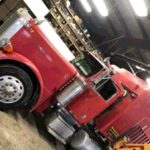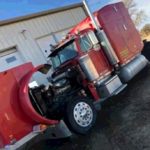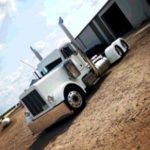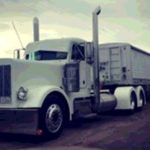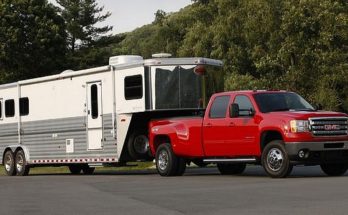
My father bought a two-wheel trailer in South Carolina to haul items like furniture and gardening supplies. While the trailer had lights, it wasn’t registered and my father didn’t have a title – he simply purchased the trailer from a friend. When he moved to Colorado, however, he was told that he had a short amount of time to get a license plate. The type of trailer you own will determine whether or not you need license plates (and lights). If you are considering a purchase or are moving to a different state, you will need to consult with your local DMV on how to proceed in regards to licensure, paperwork, and inspections.
North Carolina, for example, has made some trailers exempt, such as those farmers use to haul produce and livestock, those made to tow vehicles, and trailers that have been brought across state lines from a state that doesn’t require a license plate. If you’ve got a flat bed, a boat trailer, or a camper, you’ll have around 30 days to register the trailer and receive a license plate to attach to it or else you’ll be cited, or even worse, fined.
If you’re unsure about what your trailer needs to be road legal, the best thing to do is to ask at your nearest DMV, as the answers will vary from state to state.
The original coupe style was created in the era where horse-drawn carriages were still the preferred mode of transportation. It was characterized by front-facing seats instead of both front and rear-facing. This meant that the passenger space available was smaller, used for casual travel instead of work or family. Later, as cars became more and more popular, this coupe style became synonymous with a two-door, fixed roof vehicle. These were often smaller versions of four door automobiles, or even sporty variants of sedans. Though at first the definition was restricted simply to the door and roof configurations, over time it has become looser to include other terms.
The name “coupe” originally hails from the French. In English it translates into “cut”, a reference to its cut-down shape and size. There are two ways to pronounce it, depending on if the accent mark is included in the spelling. Prior to World War II, it was pronounced “KOOP”, though in the 1950’s Chevrolet decided to introduce the Coupe (pronounced KOO-PAY) to distinguish it from other companies’ offerings. Mostly, however, at least in North America, it is pronounced “KOOP”, as in the Beach Boys’ song “Little Deuce Coupe”.
There are several variants of the coupe, going all the way back to the 1910’s with the coupe de ville, which retained a chauffeur’s seat along with the two front-facing passenger seats (usually a bench). Other variations include the business coupe, which was designed to aid salespeople in storing their wares, the club coupe, which had more passenger room, and the opera coupe, which was designed specifically for attendees of the opera, which was made so that the rear seating was easy to access, allowing for a simple step onto the curb as a valet drove the car away. The design elements vary from coupe to coupe, some of which will retain similar looks to their four door counterparts, while others will be molded into an entirely different model.
Coupes are typically not seen as family cars – there is little room to maneuver, and limited seating available. It’s a great car for a younger person who doesn’t have a lot to haul, or an older person who is traveling solo or with a partner. They’re often found at good prices, and some brands are known for their durability (the Honda Civic for example). While they don’t reach the entire populace, they are promoted and advertised to good effect, still quite popular with many individuals who like a simpler or sportier build than the typical four door sedan. I knew plenty of college students whose first cars were coupes, and there were plenty of young families I’ve known that started out with a coupe.
Well known coupe vehicles include the Alfa Romeo GT, the Honda Accord and Civic, the Dodge Challenger, Porsche 911, Audi A5 and R8, and the Nissan 370Z. If you’re curious about the coupe and want to read further, the Coupe Wikipedia place is a great place to start, with lots of resources to continue your research. You can also find plenty of photos, videos, and fan pages online.
It’s no secret that I love classic cars. I love the odd, unique, lesser known models just as much as I do the most popular vehicles. I hadn’t, however, spent much time learning about Hudson’s offerings until recently, and I’ve fallen in love with the Hudson Pacemaker. Not only does it have low, classic lines, it’s also a convertible. It has become a rare sighting these days, but these early 1950’s vehicles are still being sought after, with one making it all the way to Sotheby’s a few years ago.
The Pacemaker is smaller than the rest of its family members (like the Hornet and Wasp), and was the lowest in overall height of any car when it came out in 1950. While it was smaller, it was definitely also sportier, able to go from business to sleek luxury in a matter of minutes. With its diminutive height, strong curves, and state-of-the-art look, the Pacemaker is still an impressive piece of automobile history, and gorgeous to boot.
Available as several different types of coupes as well as a four-door, and several of them were convertibles. There were also two packages available, the standard “500” package and the Deluxe, which came with a higher quality of interior materials. The way the Pacemaker was built also insured that it handled better than other cars in its range, partly due to its “step down” design, with part of its body covering the back wheels.
Standard equipment included a 3-speed manual transmission and a 6-cylinder engine, although there were a few different transmission options should the owner desire an automatic transmission. There was even a vacuum operated clutch possibility, though it was quite complicated. It did allow the driver to choose between manual and automatic transmission styles. It had a wheelbase of 119 inches, an an overall length of just over 201 inches. It weighed 3,305 lbs. Later in the Pacemaker’s evolution, the “Deluxe” package became known as the Hudson Wasp, similar to the Commodore’s upgraded package, known as the Hudson Hornet. Later this would turn into the Wasp and Super Wasp. Collectors like the Hornet and Wasp packages, but if you’re looking to start more simply and for less of an upfront cost, you may want to try and find a regular Pacemaker from the early 1950’s and upgrade afterward.
The price range for a Pacemaker varies widely these days, depending on the mileage, upkeep, restoration, and overall condition of the vehicle. The Pacemaker put up at Sotheby’s sold for over $60k, but there are others that have been restored and sold in the U.S. for around $20k. Of course, if you’d rather look them over instead of purchasing one, you can find them touring car shows around the country. Look for the specialty versions, either the Hollywood Hardtop or the Brougham Convertible.
While there isn’t as much detailed information about the Hudson Pacemaker itself, you can see the Wasp and Hornet versions in pop culture, such as Doc Hudson, a character in the Pixar movie “Cars”. While the Pacemaker and its variants may not be traveling the open road as much anymore, they’re still beloved by the American public, and likely to last in the lexicon for quite some time.
If you don’t own or regularly drive a pick-up, you may not be aware of the difference in types of cabs. Even if you are aware, different brands use different terminology to denote changes made in the seating arrangements and door types. Chevrolet uses “crew cab” for their 4-door trucks that hold 4-5 adults, and the doors are typically hinged in front. While they’ve sold crew cabs for quite some time, there are only two that are currently being sold — the Chevy Silverado and the Chevy Colorado. Both are available in a variety of styles from 2-door to 4-door and even Dually. Past offerings in the crew cab configuration include the Chevrolet C/K truck.
Depending on what you want out of a truck, you may need to compare the Silverado and Colorado and figure out which one will work best for you. The Chevrolet Silverado has been around since 1998, and is considered a heavy-duty and full-size truck. It was the model to replace the Chevrolet C/K in the late 1990’s. Currently, the Silverado is sold with the option of a gasoline or diesel engine, as well as updated technology such as WiFi connectivity, an infotainment system, and plenty of advanced safety features.
The Chevrolet Silverado was also used by the military, mostly as cargo haulers, though some were used as troop carriers and ambulances. They were outfitted with different paint colors and military grade items like weapon supports, blackout lights, and additional controls. There was also an option to include the Enhanced Mobility Package (EMP), which added items such as beadlock tires and anti-lock brakes. About 2,000 of these special military vehicles were sold internationally.
If you’re looking for a smaller, mid-size pickup, then the Chevrolet Colorado might be the one to inspect. It replaced the GMC Sonoma as the compact and mid-size pickup for the GMC/Chevrolet brand in the early 2000’s, and is produced in factories from the United States to South America and Asia. Only in its second generation, the Colorado has already been shown at Bankok Motor Show and the Australian International Motor Show, and has a few variants, including the Holden Colorado, available in four trim levels, or with an additional Thunder Edition, which includes a nudge bar and towing kit. It also won awards in 2015 and 2016 for The Truck of the Year.
While the Chevrolet Silverado and Colorado are the only current offerings as far as crew cabs go, there are previous models that can also be found for purchase, such as the GMC/Chevrolet C/K. While it’s unclear how long both the Silverado and Colorado will be around, it’s quite likely that their designs extend at the very least into the near future. It’ll be interesting to see how much technology will change the interior, however, as there are so many more gadgets and accessories that are becoming a requirement for even standard packages.
If you’re thinking about purchasing a truck, you may want to take a peek at what Chevrolet has to offer. If you’d rather just learn more about these types of vehicles, a visit to their respective Wikipedia pages is a great place to start.
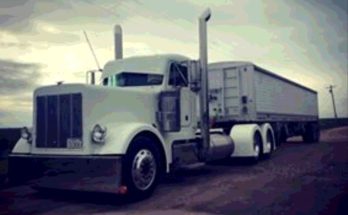
This one was sent in from one of the members of our page, Kile Schilke, and he sent in a bunch of photos as well so you can all check out the process of customizing this 95 Peterbilt – a custom job he did himself.
His words:
“It was originally a red unibilt sleeper truck 1995 379 American class package that I restored myself with a friend has a Detroit 60 series and a 13 speed. I put on the under cab fairings daycab kit deck plate and full fenders then 8” exhaust and extended front fenders got some pics of the process
“All the paint and body work was done by myself paint to matched the grill stainless battery box/toolbox covers 20” front bumper and a whole bunch of purple lights.”
A Ford Compact Pickup?
“There’s no smoke without fire,” I’ve heard. I’ve been wondering about that in regards to a new rumor about a future vehicle from Ford. Where did the rumor start? Did someone at Ford decide to let it trickle down and work its way into the masses, or did someone sneak out information and try to get it to another company to use? Or, is it a completely baseless rumor started by someone online who wanted attention? While we may never know the origin of a specific rumor, it’s still fun to speculate and see what happens. After all, there’s a kernel of truth in every rumor, right?
What I’ve heard about Ford is that there might be a new vehicle on the market, one that will bridge the gap between compact cars and pickups with the concept of a compact pickup, possibly along the lines of a Courier. While the Courier never really had a U.S. market appeal, now might be the time to test it out, since Ford has committed to shutting down its four-door car lines in the very near future. While there are other companies that sell similar vehicles overseas, there has never been one to produce for the U.S., though Hyundai has decided to enter the race.
Can Ford produce a compact pickup that will appeal to its audience before Hyundai gets there? Or will Hyundai sell to its own market? What will the Ford compact pickup look like, and what will it have to offer that others might not? It remains to be seen, but there are people online speculating that Ford is heading toward a big shakeup in regards to models being retired and new ones being produced.
It may be time for a new era. Out with the old, and in with the new. Although at the moment it seems that the old has become the new, especially with models like the Ford Ranchero and Bronco coming back into play. At this point we seem to want to pull the past into the future with us, whether that’s wishful thinking for the way things were, or recognizing that even though we can’t go back, we can keep the good things with us no matter where in time we are.
I’ll be keeping a lookout for this new compact pickup, as I am rather too short to drive something like the Ford F-150, but need the hauling capabilities of a pickup for camping equipment, helping people move, or loading up instruments so my brother and I can play wedding gigs.
If you too are interested in what Ford has in store for future designs, you may want to check in on us every so often. We’ll be updating and writing new articles with the information we glean online, speculating about what’s in store for Ford and whether we’ll be seeing futuristic designs in the next few years or if we’ll be seeing reinventions of Ford’s most popular vehicles, or perhaps a little bit of both. We’ll keep you posted.
Semi Sleeper Cabs
The value of custom sleepers for semi trucks has a lot to do with money savings on trucker’s other accomodations. It costs a lot to get a big roomy semi sleeper fabricated onto a tractor unit, or even a big sleeper truck that’s not a big rig, but that means every night the driver is on the road, he or she doesn’t have to pay for a hotel or motel. It’s the truck sleeper cab life!
It’s also useful for RVers or people who drive commercial transport, even owner-operators, who don’t have a house of their own, or even a rental in some cases, because they can live out of their semi sleeper. Some of them are even up to luxury RV motorhome standards – semi trucks with showers and toilets, couches and entertainment systems, that allow their owners to use them for road trips for fun as well and camp out.
They also could be said to increase the types of jobs a driver or owner-operator can take on, because his required costs are lower without hotels, and he doesn’t have to schedule his trip or driving legs around stopovers.
The cost of a big sleeper trucks extra large unit is said to be around $200000, but that’s for a new luxury large sleeper unit with all the trimmings. Some of the best ones are being made by ARI trucks. You can obviously get them cheaper, and a used tractor that has a sleeper on it is usually cheaper than that price. This can be measured against the cost of a cheap apartment or house, which starts at $40,000 or so for the very cheapest, and goes up from there.
The Ford Model T is hardly the first motor vehicle to make an appearance on the open road, but it does hold the distinction of being the first affordable automobile, the one that made it possible for the average person to explore long distance. Part of the reason for this were the changing practices in the automotive industry, led by the Model T’s own patriarch, Henry Ford. With faster build times and more strict adherence to mass market procedures, the car became so popular that it is still on the top ten list as one of the most sold cars in the history of the industry (over 16 million were sold).
Led by Henry Ford’s vision for a family-friendly vehicle that would appeal to the masses, the Ford company (with designers Eugene Farkas, Joseph A. Galamb, Peter E. Martin, Henry Love, C.J. Smith, Gus Degner, and Childe Harold Willis) began production in 1908. In 1927, Henry Ford watched as the 15 millionth vehicle was completed. Though there were no model year categorizations used at the time, generally historians break the models into five generations, noting primarily the changes in the hood and cowl area of the vehicle.
The engine was front mounted, with a unique ignition system that was capable of handling multiple types of fuel, such as kerosene or gasoline. Though it boasted a “three-speed” transmission, one of those was technically ‘reverse’, so today’s experts would instead consider it a two-speed. The transmission bands themselves were crafted from cloth or wood, with the wood giving the driver the ability to feel the grip on the wheel.
Though originally the Model T was sold in a small variety of colors including red, green, and blue, Ford insisted early on during its production that they stick to only black, partially because of the rising costs and inefficient chemical standards of the time. During the first World War, in fact, the sources for dyes shrank, and the color palette was limited. Later, in the mid-1920’s, lacquers became popular because of their wide range of dry times, coating (fewer coats to paint meant keeping the cost down), and durability.
One of the unusual aspects of the Model T is that it was built in a time when there were few, if any, portable engines or power tools. Ford realized this and ensured that the Model T could be used as more than just a touring or family vehicle. It could also double as a tractor or hauler, or be paired with other farm equipment to allow farmers to harvest, bale, or pump. Other companies and individuals also converted the Model T for other uses, such as an armored car, tractor, or snow vehicle.
While it may not have been the original car, the Model T is perhaps the best remembered of early vehicles, and remains in the global public consciousness even today. It was the first vehicle sold around the world, with production plants in North and South America, Europe, and Asia. There are still around 50,000 Model T’s in North America that are roadworthy, so don’t be surprised if you see one drifting by someday.
Sometimes, in order to grasp the amount of progress or innovation made, it’s a good idea to go back and look at where things started. The 2018 Ford GT Supercar looks incredible, but learning more about its backstory really does give one a sense of just how much went into making it the vehicle it is today. Its roots go all the way back to the 1960’s to the Ford GT40, a racecar that not only underwent the grueling 24 Hours of Le Mans but won four years in a row. While the Ford GT Supercar isn’t a new generation of the GT40, it was inspired by the car’s speed and style.
So far, there have been two generations of the Ford GT Supercar, though the generations have been separated by almost a decade. The original generation (over 4,000 units) was created in conjunction with Ford’s centennial celebration. In the beginning it was looked at as a concept car, one that on the surface resembled the GT40 but had the inner workings of a 21st century vehicle. The vehicle not only made waves in the circles of the upper class but also in entertainment, where it appeared in video games such as Gran Turismo 4 and Need For Speed:ProStreet. the GT Supercar’s first generation was made and sold between 2004-2006, and it wouldn’t be until 2017 that the second generation surfaced.
In 2016, the second generation Ford GT Supercar was introduced, making a splash in the racing world after it won the LMGTE Pro Class portion of the 24 Hours of Le Mans fifty years after the Ford GT40 did. The new generation is being produced in smaller quantities, about 250 units annually, which allows for plenty of innovation, adjustment, and hype. The lightweight carbon fiber body has ensured that the GT Supercar is one of the best production car choices when it comes to the power-to-weight ratio. It can go from 0-60 mph in under three seconds, and its Gorilla Glass windshield allows for the same safety features as regular windshields with less weight.
The 2018 Ford GT Supercar has a 647 hp EcoBoost V6 engine, an even more aerodynamic design than the last generation, and several unique elements, such as the ship-in-a-bottle gas tank, one piece door panels, and a friction stir welded center tunnel that is covered with a magnesium center console. Unfortunately, since production numbers are low by design, the vehicle is not available to the general public until 2020, after all the pre-orders and selected buyers’ orders have been filled.
If you’re at all into racing, you can get a look at the Ford GT Supercar (both generations) in action by looking up the following races: 24 Hours of Le Mans, FIA World Endurance Championship, 24 Hours of Daytona, 6 Hours of Fuji and 6 Hours of Shanghai. If you want to get an up close and personal look via photos and videos, you can learn all about it by visiting Ford’s GT Supercar page, which contains information on its specs as well as plenty of footage of this gorgeous car in action. Trust me, you want to see it. If you’re feeling extra lucky, you can, of course, submit your application to be considered as an owner to one of these gorgeous cars before the general public gets a chance in 2020.
While Henry Ford is often credited with the first use of mass production, it was technically Oldsmobile’s founder, Ransom E Olds, who gets to claim that distinction. Ford was the first to utilize a moving assembly line, but Oldsmobiles were part of the mass market since 1901. Perhaps the most well-known early Oldsmobile model was the 1910 Limited Touring make, which has become a part of art history, as painted by William Hardner Foster in Setting the Pace to commemorate the vehicle’s win against the 20th Century Limited train.
In the 1930’s, the Oldsmobile pioneered the use of a semi-automatic transmission, though by the 1940’s they were utilizing a completely automatic transmission. During World War II, production halted as Oldsmobile got involved with war efforts and became a supplier of large-caliber guns and shells. After the war they went back to their pioneering roots and introduced the overhead valve V8 engine, which became an instant success with fans of racing and hot rods. It was quite a bit more powerful than the other engines at the time (which used a flathead, straight eight design), and worked so well that it wasn’t revamped until the 1960’s.
The Oldsmobile suffered a low point in the 1950’s due to style changes across the automotive industry, but hit its stride once again in the 1960’s, with the introduction of the first modern four-wheel drive vehicle and the new turbocharged engine. Oldsmobile began selling muscle cars as well as mid-size cars, coupes, and station wagons. Most notable were the Oldsmobile Cutlass, the Vista Cruiser, and the Tornado, the last of which was the largest front-wheel drive car ever produced when it appeared on the vehicle scene in the late 1960’s, making such a splash that it was named “Car of the Year” in the 1966 edition of Motor Trend.
While the 1970’s and 1980’s were mostly good to Oldsmobile, there were a few hiccups mixed in, such as the PR disaster that occurred when Oldsmobile decided to replace their Rocket engine with a Chrysler design due to demand exceeding output. The V8 engine was soon fading out of style for most regular vehicles, but the lead up was harried and cost Oldsmobile some loyal customers.
Despite Oldsmobile’s track record, it began to fall out of favor in the late 1990’s, and in 2000, their parent company General Motors declared that the Oldsmobile badge would be retired on a phaseout schedule. Despite their last vehicle being a commercial success, Oldsmobile went the way of the dinosaurs in 2004, after the last car rolled off the production line. It was signed by all the workers present and is now residing in Sterling Heights, Michigan at the GM Heritage Center.
With over 100 years of production, Oldsmobile was, until it was shut down, the oldest American vehicle company, as well as one of the oldest vehicle companies globally. Though it has been 14 years, there are still Oldsmobiles being driven down the roads today, and it wouldn’t surprise me if, at some point, someone decided to resurrect this old marque and re-create it for a modern day driver.
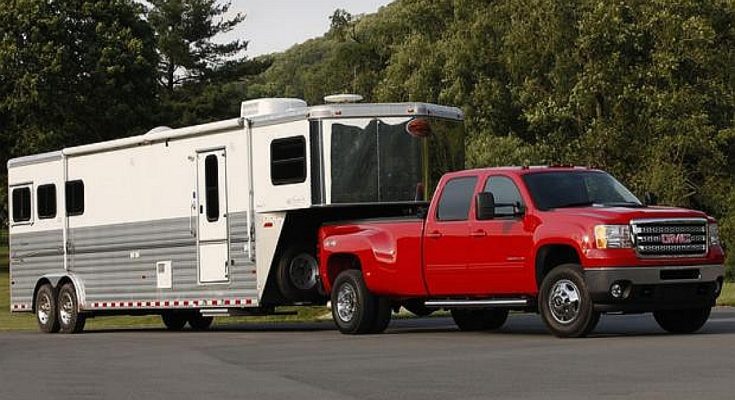 " >
" >


